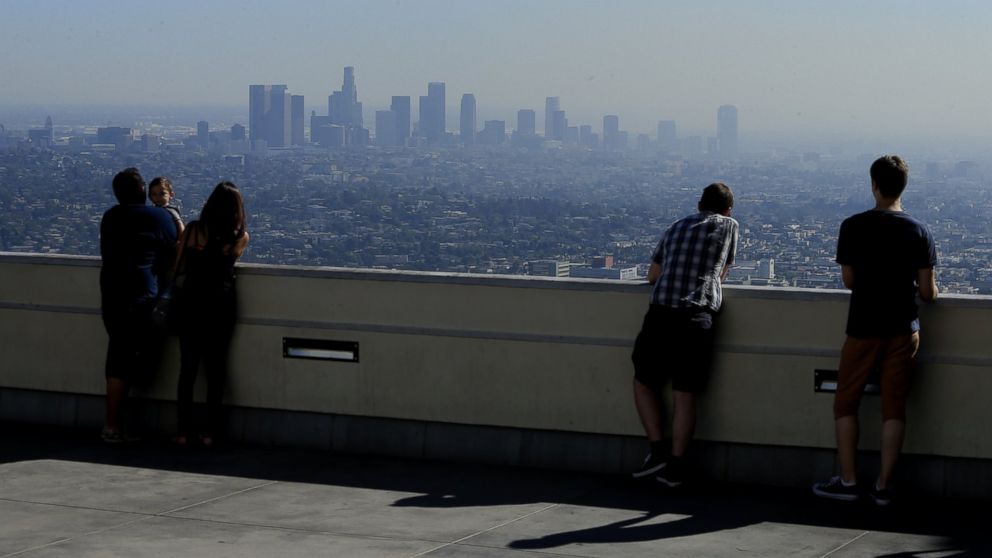Los Angeles, Bakersfield Top List Worst US Cities for Air Pollution
Find out the U.S. cities with worst levels of air pollution.

— -- Taking a deep breath in Los Angeles may fill your lungs with more than fresh air as the city is among the worst offenders for air pollution in the U.S., according to the American Lung Association’s (ALA) 2016 State of the Air report.
Released today, the report finds 166 million people, or 52.1 percent of people in the U.S., live in counties that have unhealthy levels of either ozone or particulate pollution. Almost 20 million people live in the 13 counties that failed all three air pollution tests (ozone, short-term and year-round particle pollution).
The annual State of the Air report analyzes a variety of factors, including ozone pollution and particulate pollution (both short-term and year-round).
Ozone smog is an invisible pollutant caused by gases reacting with sunlight. Particle pollution is a mix of minuscule liquid and solid particles suspended in the air; the particles come from a variety of sources.
“It causes exacerbations of lung disease, especially asthma,” Dr. Norman Edelman, senior scientific adviser to the ALA, said of the health effects of pollution. “It’s like having lung disease and catching pneumonia.... It exacerbated it to the point of increasing death from lung disease.”
Children with normal lungs will have compromised lung growth with exposure to pollution, said Edelman. And the effects of air pollution aren't limited to the lungs, they can exacerbate heart disease and cause heart attacks, Edelman said.
California cities were among the worst for air pollution, with Los Angeles and Bakersfield the worst offenders for either ozone or particle air pollution.
Other California cities including Fresno, Sacramento, Modesto, San Francisco, and El Centro also ranked in the top 10 for either most ozone-polluted cities or cities most polluted by particle pollution.
Efforts to reduce pollution continue to improve the air in much of the U.S. The best progress was seen in ozone and year-round particle pollution. However, many cities demonstrated spikes in short-term particle pollution.
Despite the bad news in some cities in the U.S., four other cities ranked on all three lists of the cleanest cities: Burlington, Vermont, Honolulu, Hawaii, Elmira-Corning, New York, and Salinas, California.
In 2015, the EPA intensified the national ozone standard after recognizing that ozone is unhealthy to breathe at even lower levels than previously known. They also revised the particle standard in 2012.
Edelman said he feels the standards could be even more stringent to protect public health.
Many cities face additional complications by climate change, which can increase air pollution. Wildfires caused by drought and stagnant weather patterns lead to pollution concentration in certain areas.
“Changes in our climate are going to exacerbate our current air quality issues,” Richard Ruvo, the branch chief for air at the Environmental Protection Agency (EPA), told ABC News that climate change remains a large concern due to its effects on pollution.
In efforts to reduce pollution, the ALA encourages people to drive less and use less electricity, as well as to avoid burning wood and trash. People concerned about exposure can protect themselves by avoiding exercising near high-traffic areas and trying to exercise indoors when pollution levels are high.
“It is important for the general public to be aware of the level of pollution in their community,” Paul Billings, senior vice-president for advocacy for the ALA told ABC News.
Edelman said there has been improvement but there is still a long way to go.
“You accept the victories and you always want things to be better,” said Edelman. “They can be better and it would make a difference that will save lives and will protect young kids from gasping for breath when they have asthma attacks.”




